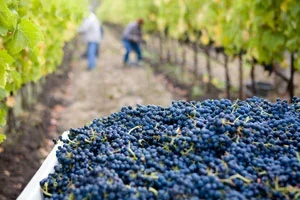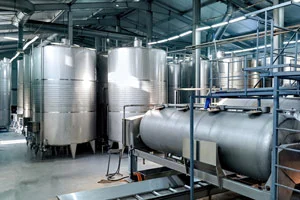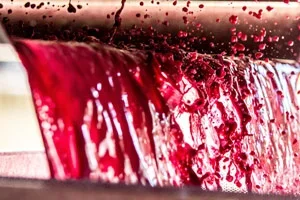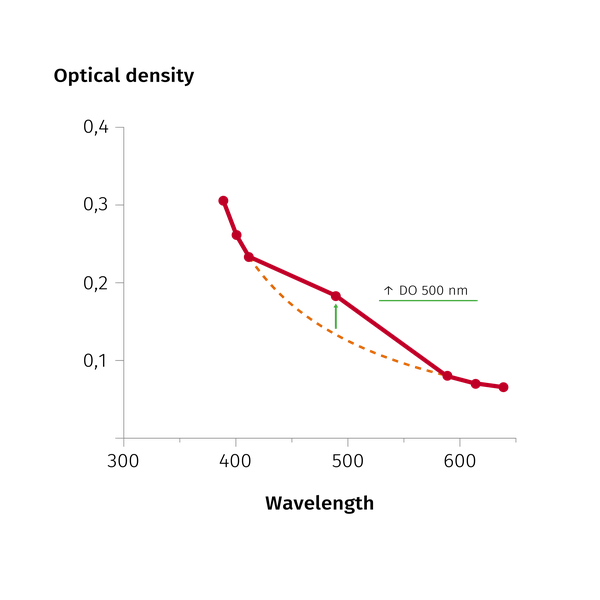What is “pinking”?
“Pinking” is the oxidative problem concerning white wine, resulting in an evolution of colour towards a grey-rose hue. This problem is caused by the reaction of the proanthocyanidins in the presence of metals such as iron or copper, with oxygen, after fermentation.
This alteration occurs during the bottling of the wine as this is when it has a higher exposure to oxygen.
Currently, the colour of white wines is one of the most valued quality parameters by winemakers and consumers. As such, “pinking” poses a problem.
Let’s go to the laboratory … What would be the experimental procedure to prevent this problem?
It must be noted that sensitivity to “pinking” is not the same for all white wines. This can depend on the variety, the redox potential of the wine, the level of polyphenols, oxidase enzymes, the elaboration system etc.
Colour determination
The colour of wine is one of the fundamental attributes used to determine its quality. It provides us with a lot of information about the aspect, tonality, intensity and possible virtues or defects that the wine may have.
The method used to evaluate the sensitivity of a wine was proposed by Simpson in 1977. The optical density of a wine is evaluated with the assistance of a spectrophotometer to measure different wavelengths between 400 and 650 nm, before and 24 hours after a treatment, with 5 ml of 0.3% hydrogen peroxide to 250 ml of wine. The sensitivity of a white wine is proportional to the difference at 500 nm. The value of this difference multiplied by 100 is the sensitivity index to “pinking”, with a risk existing if the index is greater than 5 (ΔDO> 0.05).
In our laboratory we can perform a pinking test and measure how susceptible a wine is to experiencing this problem. This analysis is available upon request, either by contacting your nearest delegation or by getting in touch with Agrovin at: info@agrovin.com or 926 550 200.
Which compounds are responsible for “pinking”?
- Phenolic compounds, specifically leucoanthocyanins
Phenolic compounds are fundamental substances in wines, as they interfere with the organoleptic properties and some of the transformations that the wine undergoes during its elaboration and ageing processes.
Leucoanthocyanins have an important role in the occurrence of the rose colour in white wines.
As a result of a process of dehydration of the leucoanthocyanins, flavylium salts (red in colour) are formed. With the presence of oxygen during the bottling and storage of the wine, flavylium salts and leucoanthocyanins become brown pigments, causing the problem of “pinking”.
- Oxygen
Oxygen is highly involved in the behaviour of phenolic compounds:
- It modifies these compounds, leading to a change in colour or “pinking”.
- It modifies the aromatic fraction as this is involved in the evolution of the aromas and the formation of compounds linked to ageing. It also relates to a decrease in varietal aromas and the development of oxidative notes.
How can wine’s contact with oxygen be prevented?
- With antioxidants, thermal treatments and removal of polyphenols.
- Avoiding exposure to oxygen. Having rigorous control during vinification and bottling processes. The amount of oxygen can be greatly, but not entirely, reduced.
- Using reducing agents such as SO2, as it has a powerful antioxidant effect.
- Eliminating polyphenols by using specific clarifying agents.
Which factors influence the appearance of “pinking”?
There are a number of factors which cause the problem of pinking to occur:
- When entire bunches are pressed, there is an increased likelihood of this problem occurring, as the branches have a higher concentration of phenolic compounds.
- The grapes are overripe.
- Treatments of grapes and must are at a low temperature, as the solubility of oxygen is greater.
- Reductive vinification.
- If the pH is too high.
Techniques to solve the problem of “pinking”
Using clarifiers
Eliminating polyphenols by using clarifying agents produces better results. Not all clarifiers possess the same ability to eliminate polyphenols. The right choice of clarifiers is key to preventing pinking from occurring.
Using antioxidants
SO2 is a reducing agent which has a strong antioxidant effect.
Which wines are at the highest risk of “pinking”?
Wines with a higher number of polyphenols, such as ones which have been in contact with their fine lees and those still on the vine.
How must a wine be treated to eliminate the risks of pinking?
The ageing of a white wine on its lees, under reducing conditions, tends to decrease sensitivity to pinking.
Clarification with casein has no effects.
A Spanish study (Raventos et al., 2001) showed that high doses of PVPP (100 g/Hl) causes a reduction in the sensitivity of white wines to “pinking” by 74%. If the PVPP is used alongside Bentonite (50 g/Hl) or ascorbic acid (15 mg/l), this reduction can reach 90-98%.
This same study showed that using a dose of 45 mg/l of ascorbic acid during bottling can fully prevent the risks of “pinking”. However, different studies have shown that to fully eliminate risks, a dose of 10 g/hl is required.
This is because the oxygen collected during bottling is quickly removed by ascorbic acid, avoiding oxidation of polyphenols. Ascorbic acid must always be used, in wine, along with concentrations of free sulphur greater than 20 mg/l. Anything that reduces the addition of oxygen during the bottling process such as using corks with low permeability, sparging with nitrogen, using a vaccum during the bottling process … will benefit the conservation of the wine and avoid pinking from occurring.
In this respect, gas control equipment in bottling such as the Oxi_Out, can help to reduce the amount of oxygen dissolved at the time of bottling.










